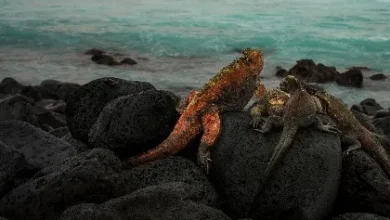The Leonid Meteor Shower is Coming! Peak Viewing Times and How to Watch

The Spectacular Leonid Meteor Shower Returns
Known as the “King of Meteor Showers,” the magnificent Leonid meteor shower is making its annual appearance in our night skies. This celestial event, associated with the constellation Leo, offers stargazers a breathtaking display of cosmic fireworks that has captivated humanity for centuries.
When and Where to Watch
Astronomers indicate that this year’s Leonid meteor shower will reach its peak around 12:30 AM on the 18th, with an expected rate of approximately 10 meteors per hour at zenith. The shower will feature particularly bright fireballs that create stunning streaks across the night sky. Observers throughout most of the Northern Hemisphere, including all regions of our country, will be able to enjoy this spectacle with the naked eye – no special equipment required.
The Science Behind the Spectacle
The Leonids originate from comet Tempel-Tuttle, which completes an orbit around the Sun every 33 years. As the comet approaches the Sun, solar radiation causes ice within the comet to vaporize, releasing countless dust particles and fragments into space. When Earth’s orbit intersects with this debris trail, these particles collide with our atmosphere at high speeds, burning up and creating the brilliant streaks we know as meteors.
Optimal Viewing Conditions
According to astronomical experts, the best viewing window occurs between the 17th and 19th in the pre-dawn hours. Fortunately, moonlight won’t interfere with observations this year, providing exceptionally dark skies perfect for meteor watching. If you miss the initial peak on the 17th, another maximum is expected around 12:30 AM on the 18th, with favorable conditions lasting until dawn.
The Legendary Leonid Storms
Every 33-34 years, the Leonids produce truly spectacular meteor storms with thousands of meteors visible per hour. The most recent major storm occurred in November 2001, when the sky filled with so many meteors that observers couldn’t possibly count them all – a display often described as nature’s fireworks. Based on comet Tempel-Tuttle’s orbital period, astronomers predict another magnificent storm around 2033, when we can expect to witness the awe-inspiring phenomenon of “stars falling like rain.”
Viewing Tips for Maximum Enjoyment
For the best experience, find a dark location away from city lights after midnight. Allow your eyes 20-30 minutes to adjust to the darkness, and be patient – meteor watching requires some waiting between bursts of activity. While the meteors appear to radiate from the constellation Leo, they can appear anywhere in the sky. Dress warmly, bring a comfortable chair or blanket, and enjoy one of nature’s most beautiful free shows. Whether you’re watching alone or with company, the Leonids offer a perfect opportunity to connect with the cosmos and reflect on the wonders of our universe.







